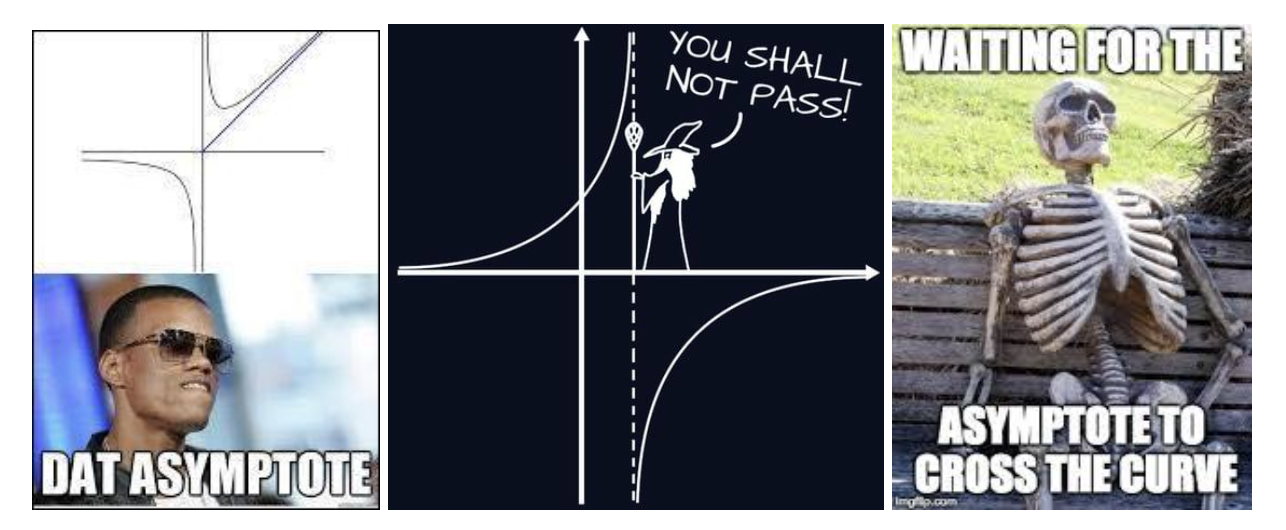Would you rather listen to this post instead? Check out the podcast version here:
Two truths and a lie:
- I voluntarily took (and passed) AP Calculus in high school
- My dad is the voice actor for the Red M&M
- I believe AI is inherently harmful and unethical
The road to my disciplinary identity has been paved with curiosity, bad assumptions, and lots of side quests.
My first intellectual infatuation wasn’t language or literature, but mathematics. While I struggled with the memorization required in my elementary and middle school math classes (I still don’t know my times tables or how to do long division), it all started to click for me in high school. I did well in statistics, algebra, and geometry, but what I enjoyed the most was my senior year AP calculus class.
Today, I’m sure I’d flunk even the easiest calculus test – but the general concepts have stayed with me.
There’s one particular idea that sticks out in my mind more than any other: the asymptote.
The concept of an asymptote is simple, but also somewhat baffling. An asymptote, by definition, is a straight line that gets closer and closer to a given curve without touching it. However, the asymptote and the curve both go on forever, so they are infinitely getting closer and closer, but never touch.
Take this example as an illustration: let’s say there’s a frog trying to reach a wall that’s 20 feet away. Every day, he jumps half the distance to the wall. So, on day one, he jumps ten feet, then the next day he jumps five, then two and a half, and so on. The frog can do this for eternity, and each time he’ll get closer, but he’ll never reach the wall.
This concept has stuck with me for two reasons:
First, the meme potentials are endless. Here are just a few of my favorites:

Second, it serves as a good metaphor for being a scholar. You can read and gain knowledge for your entire career, but there will always be more to read and more to learn – and that’s okay. In fact, that’s what makes our job so interesting.
And that’s not the only time my understanding of mathematics has influenced how I see and understand the discipline. Working with formulas has helped me construct elaborate sentences; writing geometry proofs has helped me grasp the concepts syllogisms; and overall, mathematical thinking has informed how I think through and craft my arguments, pick my methods, and come to my conclusions.
When I eventually arrived at my current Ph.D. program, I quickly got labeled as “the quantitative girl.” I found no issue with this label until the end of my first semester, which brought the rise of ChatGPT and the AI boom. Suddenly, because I had positioned myself as a quantitative researcher interested in digital writing technologies, I was expected to jump on the AI bandwagon. While I’ll admit I was curious about AI at first, I soon realized the harm it has done – and will continue to do.
I won’t get too much into my reasons for feeling this way about AI, but let’s just say that, in my opinion, AI is an environmentally devastating, unethical technology that offers a poor imitation of the writing it plagiarizes.
As a scholar in this corner of the field, I proudly walk a fine line; on one hand, I believe in the power of digital writing technologies and computational quantitative research methods – on the other, I believe we should reject techno-determinism and the increasingly rampant idea that technology will save us.
On a cheerier note, in case it isn’t clear, the lie is #2: my dad is not the voice of the red M&M.
He’s the voice of the blue M&M.
